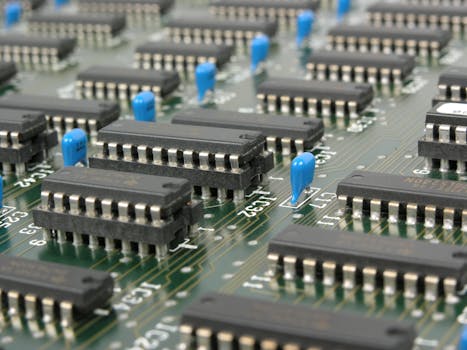
Exploring the World of Electronics: A Comprehensive Guide
Electronics have revolutionized the modern world, impacting every facet of our lives from communication and entertainment to healthcare and transportation. This comprehensive guide delves into the fascinating world of electronics, exploring its fundamental principles, key components, and diverse applications.
Understanding the Basics of Electronics
At its core, electronics involves the controlled flow of electrons through various materials and components. This flow, known as current, can be harnessed to perform a wide range of tasks, from powering simple circuits to processing complex data in computers.
Key Concepts in Electronics:
- Charge: The fundamental property of matter that gives rise to electrical phenomena. Electrons carry a negative charge, while protons carry a positive charge.
- Current: The flow of electric charge, measured in amperes (A).
- Voltage: The electrical potential difference between two points, measured in volts (V). It drives the flow of current.
- Resistance: The opposition to the flow of current, measured in ohms (Ω). Resistors are components designed to control current flow.
- Ohm's Law: A fundamental relationship in electronics, stating that voltage is equal to current multiplied by resistance (V = I * R).
- Circuits: Closed paths through which current flows. Circuits can be simple or complex, containing various components like resistors, capacitors, and inductors.
Essential Electronic Components
Electronic circuits are built using a variety of components, each with its unique function:
- Resistors: Limit current flow and control voltage levels within a circuit.
- Capacitors: Store electrical energy and can be used for filtering and timing applications.
- Inductors: Store energy in magnetic fields and are often used in filters and power supplies.
- Diodes: Allow current to flow in only one direction, used for rectification and switching.
- Transistors: Act as electronic switches and amplifiers, forming the basis of many electronic devices.
- Integrated Circuits (ICs): Miniaturized circuits containing thousands or millions of transistors and other components, enabling complex functionality in a small package.
Applications of Electronics
The applications of electronics are vast and ever-expanding, impacting countless industries:
- Consumer Electronics: Smartphones, televisions, computers, gaming consoles, and other devices that enhance our daily lives.
- Medical Electronics: Diagnostic equipment, patient monitoring systems, implantable devices, and other technologies that improve healthcare.
- Industrial Electronics: Automation systems, robotics, process control, and other applications that enhance efficiency and productivity.
- Telecommunications: Mobile networks, satellite communication, internet infrastructure, enabling global connectivity.
- Automotive Electronics: Engine control units, safety systems, infotainment systems, and other electronics that enhance vehicle performance and safety.
- Aerospace Electronics: Navigation systems, communication systems, flight control systems, and other critical technologies for air and space travel.
Future Trends in Electronics
The field of electronics is constantly evolving, driven by ongoing research and development. Some key future trends include:
- Nanotechnology: Miniaturizing electronic components to the nanoscale, enabling even more powerful and compact devices.
- Flexible Electronics: Creating flexible and bendable circuits for wearable devices and other innovative applications.
- Quantum Computing: Harnessing the principles of quantum mechanics to build incredibly powerful computers.
- Internet of Things (IoT): Connecting everyday objects to the internet, creating a network of intelligent devices.
- Artificial Intelligence (AI): Developing intelligent systems that can learn and make decisions, revolutionizing various industries.
Conclusion
Electronics is a fundamental driving force behind technological advancements, shaping the world we live in and paving the way for a future full of possibilities. As the field continues to evolve, we can expect even more groundbreaking innovations that will transform our lives in unimaginable ways.



Posting Komentar